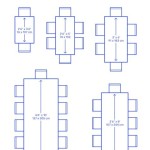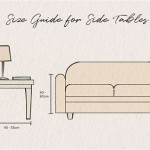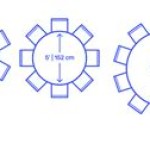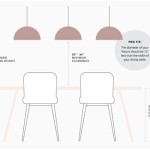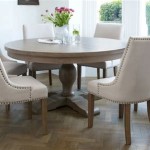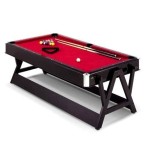Stackable Outdoor Table And Chairs: Maximizing Space and Style
Outdoor living spaces are increasingly valued as extensions of the home, providing areas for relaxation, entertainment, and connection with nature. The selection of appropriate furniture is crucial for creating functional and aesthetically pleasing outdoor environments. Stackable outdoor table and chairs offer a versatile solution, particularly for those with limited space or a need for flexible arrangements. This article explores the various aspects of stackable outdoor table and chairs, including their benefits, materials, design considerations, and maintenance, providing a comprehensive overview for potential buyers.
Benefits of Stackable Outdoor Furniture
The primary advantage of stackable outdoor furniture lies in its space-saving design. When not in use, chairs can be stacked vertically, minimizing the footprint required for storage. This is particularly beneficial for balconies, patios, and smaller gardens where space is at a premium. Folding furniture offers a similar space-saving advantage, but requires individual folding and unfolding, a process that can be more time-consuming than simply stacking chairs.
Beyond storage efficiency, stackable furniture provides flexibility in arrangement. The ability to easily add or remove chairs as needed makes it ideal for accommodating varying numbers of guests. For example, a small table and two chairs can be used daily for intimate dining, while additional chairs can be quickly added for larger gatherings. This adaptability is particularly useful for individuals who frequently entertain outdoors but lack permanent seating solutions for large groups.
Furthermore, stackable furniture often contributes to a cleaner and more organized outdoor space. Stacking chairs tidies up the area when not in use, preventing clutter and creating a more visually appealing environment. This is especially important in smaller outdoor spaces where disorganization can quickly overwhelm the area. The ease of stacking also simplifies cleaning and maintenance, as the furniture can be quickly moved out of the way for sweeping or washing the patio surface.
Materials and Construction
The durability and longevity of stackable outdoor table and chairs are heavily influenced by the materials used in their construction. Common materials include metal, wood, plastic, and wicker, each with its own set of advantages and disadvantages.
Metal, such as aluminum and steel, is a popular choice for outdoor furniture due to its strength and weather resistance. Aluminum is lightweight and rust-resistant, making it suitable for coastal environments. Powder-coated steel offers enhanced durability and corrosion protection. Metal furniture typically requires minimal maintenance, although regular cleaning is recommended to prevent dirt and grime buildup.
Wood provides a natural and aesthetically pleasing option for outdoor furniture. Teak is a particularly durable and weather-resistant wood, prized for its natural oils that repel water and insects. Other hardwoods, such as acacia and eucalyptus, are also commonly used. Wood furniture requires regular maintenance, including cleaning, oiling, and sealing, to prevent cracking, warping, and fading.
Plastic, particularly polyethylene and polypropylene, offers a lightweight and affordable option for stackable outdoor furniture. Plastic furniture is typically weather-resistant and easy to clean. However, it may not be as durable or aesthetically pleasing as metal or wood furniture. Furthermore, plastic furniture can be susceptible to fading and cracking under prolonged exposure to sunlight.
Wicker, either natural or synthetic, provides a stylish and comfortable option for outdoor seating. Natural wicker is made from plant fibers and requires regular maintenance to prevent damage from moisture and insects. Synthetic wicker, made from resin or plastic, offers greater weather resistance and requires less maintenance than natural wicker. Wicker furniture is often paired with cushions for added comfort.
The construction of stackable outdoor furniture also plays a significant role in its durability and stability. Welded joints are typically stronger than bolted joints, although bolted joints allow for easier disassembly and repair. The design of the frame and the weight distribution of the chairs are also important considerations. Chairs with wider bases and well-supported frames are generally more stable and less likely to tip over.
Design Considerations for Stackable Outdoor Furniture
Beyond materials and construction, the design of stackable outdoor table and chairs is crucial for both aesthetics and functionality. The style of the furniture should complement the overall design of the outdoor space and reflect the homeowner's personal taste. Considerations include the color, shape, and texture of the furniture, as well as its compatibility with other outdoor elements such as landscaping, lighting, and accessories.
Ergonomics is another important design consideration. Chairs should be comfortable to sit in for extended periods, with adequate back support and appropriate seat height. Tables should be sized appropriately for the intended use, whether it be dining, working, or simply enjoying a cup of coffee. The design should also allow for easy stacking and unstacking, minimizing the effort required for storage and arrangement.
The overall dimensions of the furniture should be carefully considered to ensure it fits comfortably within the available space. It is important to measure the area where the furniture will be used and stored to avoid overcrowding or awkward arrangements. The height and width of the stacked chairs should also be taken into account when determining storage locations.
Color plays a significant role in the aesthetic appeal of outdoor furniture. Neutral colors, such as black, white, and gray, are versatile and can easily be incorporated into a variety of outdoor settings. Brighter colors, such as blue, green, and red, can add a pop of personality to the space. The color of the furniture should complement the surrounding environment and create a cohesive and inviting atmosphere.
The texture of the furniture can also contribute to its overall aesthetic appeal. Smooth surfaces, such as polished metal and smooth plastic, offer a sleek and modern look. Textured surfaces, such as woven wicker and rough-hewn wood, provide a more rustic and natural feel. The texture of the furniture should be consistent with the overall design of the outdoor space.
Maintenance and Care
Proper maintenance and care are essential for prolonging the life of stackable outdoor table and chairs. The specific maintenance requirements will vary depending on the materials used in the furniture's construction. However, some general guidelines apply to all types of outdoor furniture.
Regular cleaning is essential for removing dirt, grime, and mildew. Furniture should be cleaned at least once a month, or more frequently if it is exposed to harsh weather conditions. A mild soap and water solution is usually sufficient for cleaning most types of outdoor furniture. A soft brush or sponge can be used to scrub away stubborn stains. Avoid using harsh chemicals or abrasive cleaners, as these can damage the furniture's surface.
Protective covers can be used to protect outdoor furniture from the elements when it is not in use. Covers help to prevent fading, cracking, and warping caused by exposure to sunlight, rain, and snow. Ensure the covers are breathable to prevent moisture buildup, which can lead to mildew growth.
For wooden furniture, regular oiling or sealing is necessary to maintain its natural beauty and prevent cracking and warping. The frequency of oiling or sealing will depend on the type of wood and the climate. Teak wood typically requires less frequent oiling than other types of wood. Always follow the manufacturer's instructions for applying oil or sealant.
For metal furniture, regular inspection for rust and corrosion is important. If rust is present, it should be removed with a wire brush or sandpaper and the area should be treated with a rust inhibitor. Powder-coated metal furniture should be inspected for chips or scratches and touched up as needed to prevent corrosion.
For plastic furniture, avoid placing it near sources of heat, such as grills or fire pits, as this can cause the plastic to melt or warp. Store plastic furniture in a shaded area when not in use to prevent fading and cracking.
Proper storage during the off-season is crucial for preserving outdoor furniture. Stackable furniture should be cleaned and dried thoroughly before being stored. Store furniture in a dry, well-ventilated area, such as a garage or shed. If storing furniture outdoors, cover it with waterproof covers to protect it from the elements.
By following these maintenance and care guidelines, individuals can ensure that their stackable outdoor table and chairs remain in good condition for many years to come, providing a comfortable and stylish outdoor living space.

Outdoor Wicker Stackable Set Party Next

All Weather Resistant Steel Furniture Home Household Stackable Outdoor Garden Dining Chairs Chair Made In Com

Save Space With Slick Stackable Outdoor Furniture Mecc
Outdoor Dining Chairs Set Of 4 With Thick Cushion All Weather Frame Stackable Patio Furniture

Aluminum Strip Stackable Outdoor Chair Patio Colorful Garden Leisure Metal Home Furniture Made In Com
Simore Stackable Outdoor Dining Chair Tables Chairs

Outdoor Table Sale And Chairs

Dining Armchair Stackable With Cushion Lcod 137 001

Torrey Wicker Stackable Outdoor Dining Chair Pottery Barn

Costway 7 Pcs Outdoor Dining Set With 6 Stackable Chairs Large Rectangle Table Garden

